Derek Jones from The Shape of Code
tldr; A paper makes various claims based on suspect data. A replication finds serious problems with the data extraction and analysis. A rebuttal paper spins the replication issues as being nothing serious, and actually validating the original results, i.e., the rebuttal is all smoke and mirrors.
When I first saw the paper: A Large-Scale Study of Programming Languages and Code Quality in Github, the pdf almost got deleted as soon as I started scanning the paper; it uses number of reported defects as a proxy for code quality. The number of reported defects in a program depends on the number of people using the program, more users will generate more defect reports. Unfortunately data on the number of people using a program is extremely hard to come by (I only know of one study that tried to estimate number of users); studies of Java have also found that around 40% of reported faults are requests for enhancement. Most fault report data is useless for the model building purposes to which it is put.
Two things caught my eye, and I did not delete the pdf. The authors have done good work in the past, and they were using a zero-truncated negative binomial distribution; I thought I was the only person using zero-truncated negative binomial distributions to analyze software engineering data. My data analysis alter-ego was intrigued.
Spending a bit more time on the paper confirmed my original view, it’s conclusions were not believable. The authors had done a lot of work, this was no paper written over a long weekend, but lots of silly mistakes had been made.
Lots of nonsense software engineering papers get published, nothing to write home about. Everybody gets writes a nonsense paper at some point in their career, hopefully they get caught by reviewers and are not published (the statistical analysis in this paper was probably above the level familiar to most software engineering reviewers). So, move along.
At the start of this year, the paper: On the Impact of Programming Languages on Code Quality: A Reproduction Study appeared, published in TOPLAS (the first was in CACM, both journals of the ACM).
This replication paper gave a detailed analysis of the mistakes in data extraction, and the sloppy data analyse performed in the original work. Large chunks of the first study were cut to pieces (finding many more issues than I did, but not pointing out the missing usage data). Reading this paper now, in more detail, I found it a careful, well argued, solid piece of work.
This publication is an interesting event. Replications are rare in software engineering, and this is the first time I have seen a take-down (of an empirical paper) like this published in a major journal. Ok, there have been previous published disagreements, but this is machine learning nonsense.
The Papers We Love meetup group ran a mini-workshop over the summer, and Jan Vitek gave a talk on the replication work (unfortunately a problem with the AV system means the videos are not available on the Papers We Love YouTube channel). I asked Jan why they had gone to so much trouble writing up a replication, when they had plenty of other nonsense papers to choose from. His reasoning was that the conclusions from the original work were starting to be widely cited, i.e., new, incorrect, community-wide beliefs were being created. The finding from the original paper, that has been catching on, is that programs written in some languages are more/less likely to contain defects than programs written in other languages. What I think is actually being measured is number of users of the programs written in particular languages (a factor not present in the data).
Yesterday, the paper Rebuttal to Berger et al., TOPLAS 2019 appeared, along with a Medium post by two of the original authors.
The sequence: publication, replication, rebuttal is how science is supposed to work. Scientists disagree about published work and it all gets thrashed out in a series of published papers. I’m pleased to see this is starting to happen in software engineering, it shows that researchers care and are willing to spend time analyzing each others work (rather than publishing another paper on the latest trendy topic).
From time to time I had considered writing a post about the first two articles, but an independent analysis of the data meant some serious thinking, and I was not that keen (since I did not think the data went anywhere interesting).
In the academic world, reputation and citations are the currency. When one set of academics publishes a list of mistakes, errors, oversights, blunders, etc in the published work of another set of academics, both reputation and citations are on the line.
I have not read many academic rebuttals, but one recurring pattern has been a pointed literary style. The style of this Rebuttal paper is somewhat breezy and cheerful (the odd pointed phrase pops out every now and again), attempting to wave off what the authors call general agreement with some minor differences. I have had some trouble understanding how the rebuttal points discussed are related to the problems highlighted in the replication paper. The tone of the medium post is that there is nothing to see here, let’s all move on and be friends.
An academic’s work is judged by the number of citations it has received. Citations are used to help decide whether someone should be promoted, or awarded a grant. As I write this post, Google Scholar listed 234 citations to the original paper (which is a lot, most papers have one or none). The abstract of the Rebuttal paper ends with “…and our paper is eminently citable.”
The claimed “Point-by-Point Rebuttal” takes the form of nine alleged claims made by the replication authors. In four cases the Claim paragraph ends with: “Hence the results may be wrong!”, in two cases with: “Hence, FSE14 and CACM17 can’t be right.” (these are references to the original conference and journal papers, respectively), and once with: “Thus, other problems may exist!”
The rebuttal points have a tenuous connection to the major issues raised by the replication paper, and many of them are trivial issues (compared to the real issues raised).
Summary bullet points (six of them) at the start of the Rebuttal discuss issues not covered by the rebuttal points. My favourite is the objection bullet point claiming a preference, in the replication, for the use of the Bonferroni correction rather than FDR (False Discovery Rate). The original analysis failed to use either technique, when it should have used one or the other, a serious oversight; the replication is careful and does the analysis using both.
I would be very surprised if the Rebuttal paper, in its current form, gets published in any serious journal; it’s currently on a preprint server. It is not a serious piece of work.
Somebody who has only read the Rebuttal paper would take away a strong impression that the criticisms in the replication paper were trivial, and that the paper was not a serious piece of work.
What happens next? Will the ACM appoint a committee of the great and the good to decide whether the CACM article should be retracted? We are not talking about fraud or deception, but a bunch of silly mistakes that invalidate the claimed findings. Researchers are supposed to care about the integrity of published work, but will anybody be willing to invest the effort needed to get this paper retracted? The authors will not want to give up those 234, and counting, citations.
 . What is the probability of the statement on the next line being a
. What is the probability of the statement on the next line being a 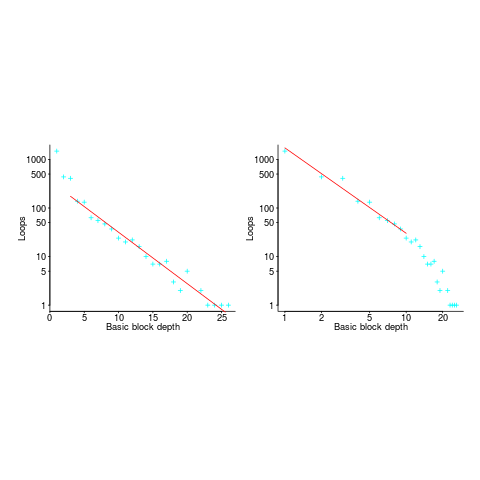


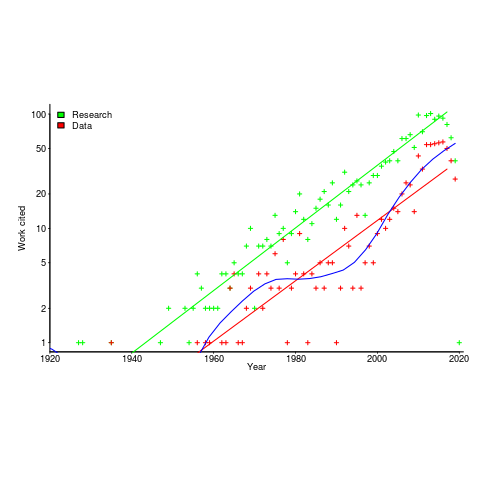
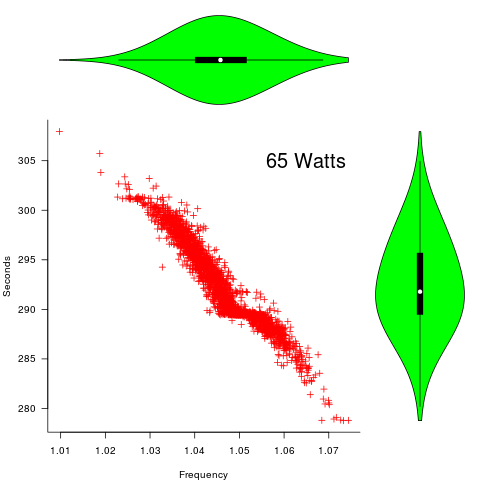
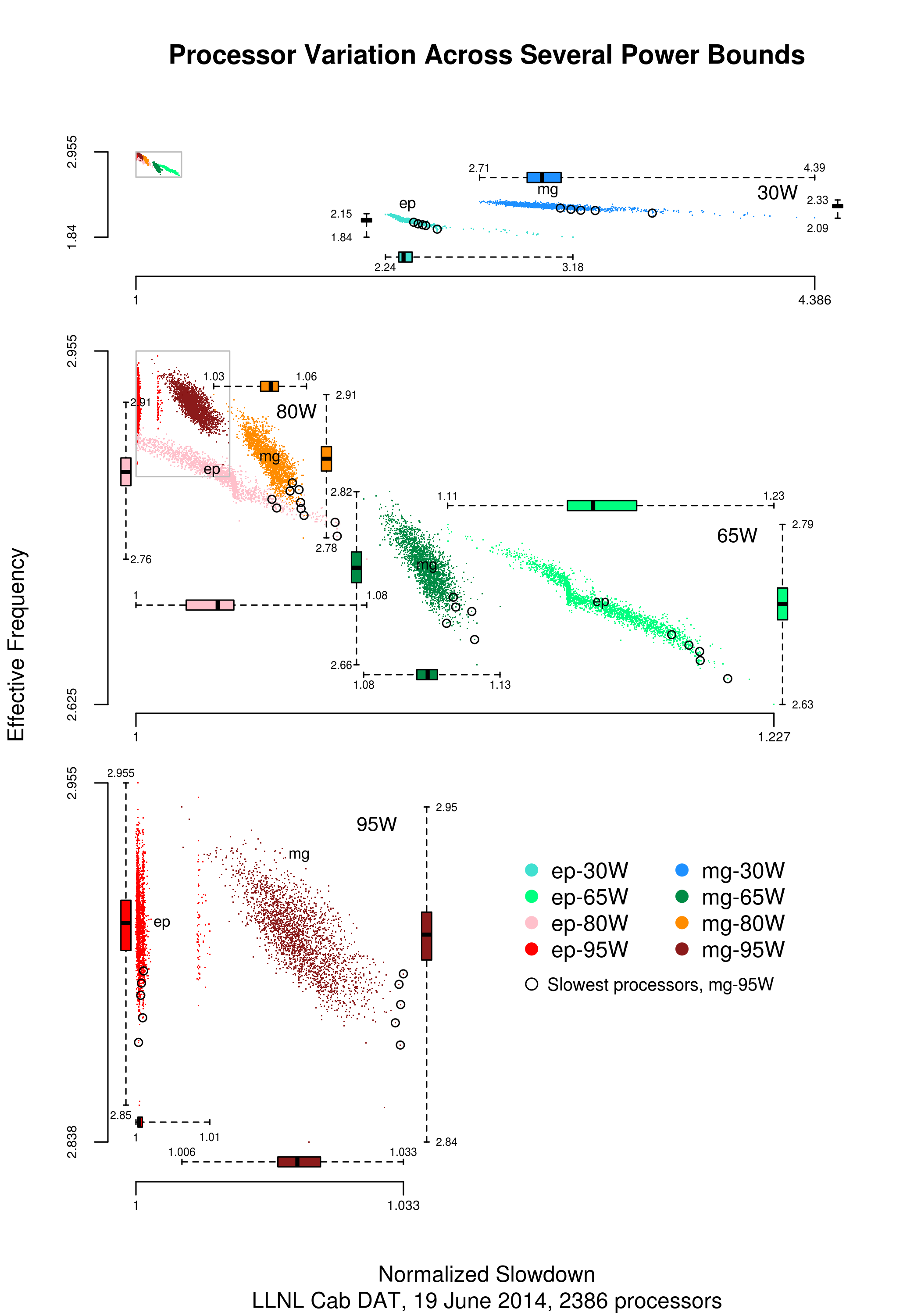
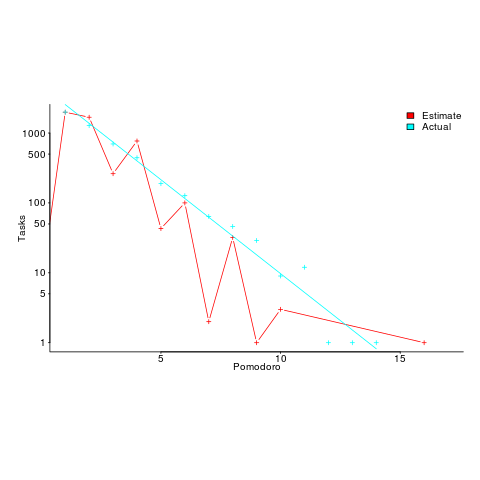
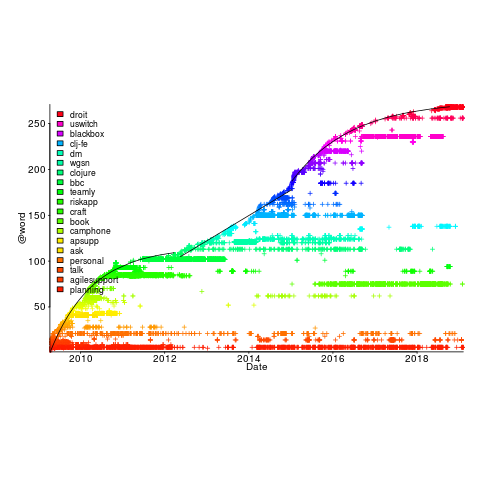
 , where:
, where:  is a constant and
is a constant and  is the number of days since the start of the interval fitted. The second (middle) black line is a fitted straight line.
is the number of days since the start of the interval fitted. The second (middle) black line is a fitted straight line. and
and  , respectively. The constants
, respectively. The constants  and
and  are needed to ensure that both probabilities sum to one; the exponents
are needed to ensure that both probabilities sum to one; the exponents  and
and  control the distribution of values. What is the probability that
control the distribution of values. What is the probability that  , where:
, where:  is the probability distribution function for
is the probability distribution function for  (in this case:
(in this case:  ), and
), and  the the
the the  (in this case:
(in this case:  ).
). .
.
